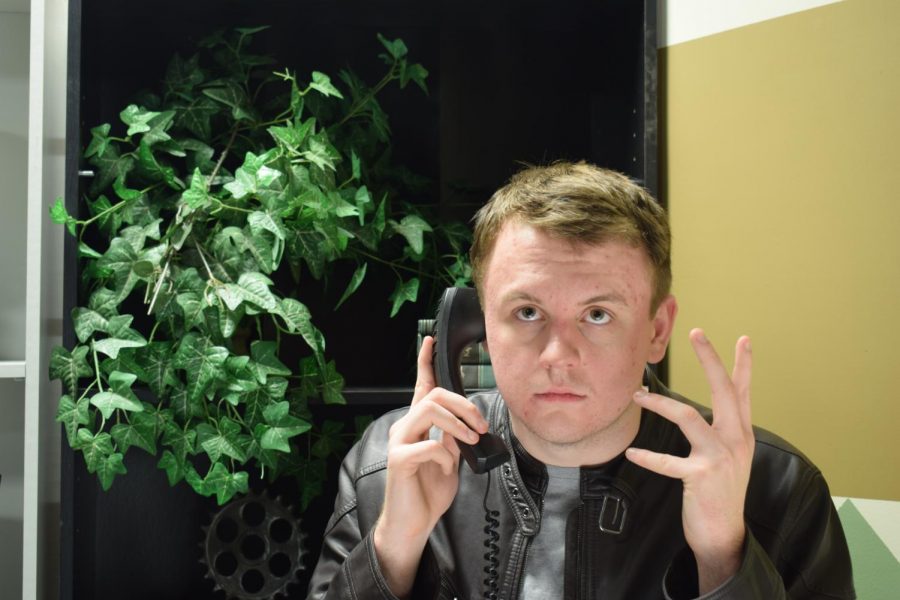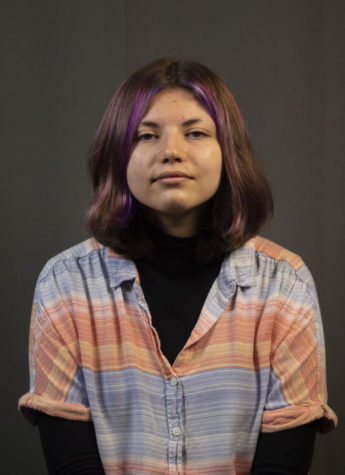Locked in: Student and expert voices detail the experience of being trapped in an unhealthy friendship
Student and expert voices detail the experience of being trapped in an unhealthy friendship
February 14, 2020
Believe it or not, not every toxic friendship ends with the other person getting hit by a bus in the middle of a fight. And not everyone’s school goes into a fighting frenzy over photocopies of rumors of each student. While real life friendships might not be as chaotic as the ones demonstrated in “Mean Girls,” the toxicity portrayed in Tina Fey’s 2004 screenplay isn’t as unrealistic as you think. As the character Cady Heron says, “The weird thing about hanging out with Regina was that I could hate her, but at the same time still wanted her to like me.” While this is just a plot line in the film, it pretty much hits the nail on the head when it comes to some aspects of toxic relationships.
NHS psychology teacher Michael Rothrock has seen how it can be especially difficult for teenagers to avoid unhealthy relationships.
“The hardest part, I think, would be having to identify, at first, [if] are you happy with who you are.” Rothrock said “Which, as an adolescent, is hard.”
A lot of high school students have a hard time leaving these friendships because of the sense of emptiness it leaves behind. Once that connection is gone, everything feels off. Adolescents are finding their identity and in doing so, can display unhealthy habits in their friendships. In some cases, this toxicity is completely unintentional, and the other person is just simply unable to recognize someone else’s needs in a friendship.
Kelly Ferriel, the Youth Advocacy Supervisor at Prevail, a crisis support service in Noblesville, says the most important aspect in a beneficial friendship is equality.
“In a healthy relationship, I think of it as a teeter-totter, where both sides are balanced, and the sides are things like our perspectives, our wants, our needs, our opinions,” Ferriel said. “It doesn’t mean that we always agree, but it means that both people have the right to express what they want, and what they think, without somebody judging them or tearing them down.”
Warning Signs
At the beginning of an unhealthy relationship, experts say warning signs are often common, alerting those involved that something isn’t quite right before the worst of the mistreatment begins. Sometimes these red flags are easy to see, but Ferriel says that they usually start out subtle.
“It could start with lots of questions about what a person’s doing, the people that they’re friends with, asking where they’re going, where they’re at right now, and instead of it being curious, like wanting to meet up with this person, often times they see that as really trying to get some power to hold over this person,” Ferriel said.
In addition to warning signs appearing slowly at first, Rothrock says that they are often hard to notice, especially for teenagers.
“The hard part about that now, is that a lot of the red signs are hidden in text messages and posts and things of that nature,” Rothrock said.
Eric Wood is a licensed therapist Indianapolis, and he says that the biggest warning signs can sometimes be found when looking at how the relationship works. He uses the “cost benefit perspective” to explain these friendships, noting that if a relationship is costing more than it is benefiting, then the relationship is probably unhealthy.
“The idea that I’m getting less than I am putting into the relationship is usually a red flag,” Wood said. “I feel like I’m investing more time, I feel like I’m putting more into this than that person, I feel like I’m devoting more energy than I am getting back.”
Overall, Ferriel says that the best thing someone can do in this situation is to trust their own judgement, especially if the warning signs indicate that the relationship is unhealthy.
“Trust your gut. If someone feels like something isn’t right, or that the other person isn’t being respectful of them, there’s a reason that they feel that way,” Ferriel said. “I would encourage them to recognize that they’re important too, and that they have the right to make their own decisions, and I would encourage them to reach out to somebody that they trust that can help them figure out what’s next in a safe way.”
Student Stories
“I sat down one day and reflected on it, realizing that it was beginning to affect my mental health, specifically my anxiety and depression, in addition to draining what energy I had left through expending a ton of effort and not properly balancing giving and taking,” Parkos said.
Experts note that there isn’t always a specific event that turns a friendship toxic; often, it can be gradual. Realizing that a relationship is not meeting standards is a big step towards healing.
Senior Logan Browning says he likes friends, “who are genuine, accepting people who hopefully can tolerate my bad jokes and obscure references.”
Knowing what types of people fit you and your definition of a friend is important, Ferriel says. In toxic friendships, it could simply be that your sense of humor isn’t compatible with a person’s or vice versa. Maybe it’s always you giving and the other person taking. Regardless of the reason, it’s important to know for yourself what you’re comfortable with. These unintentional or even intentional friendships can have longing last affects on you and your future relationships.
Browning says. “I think they are inevitable [toxic friendships], if you are a people pleaser (like myself),” Browning explains. “If you want to make everyone happy and tend to let others walk over you in response to this, that’s when these toxic relationships are unavoidable. I don’t know if I can say that they are needed for personal growth. Each toxic relationship or friendship has usually ended up in me growing in a slightly negative manner; such as trust issues. But I can see how the experience could [teach others] how to avoid the situation in the future,”
Help
Toxic relationships are just as they sound: toxic. While friendships are supposed to make you feel loved, these friendships cause you to feel tired and depressed.
Parkos explains some of the many warning signs and effects she noticed in her toxic relationship.
“The primary ones, in my perspective, are getting a feeling of anxiety or panic whenever you see them or talk with them via call/text, feeling an immense pressure to please the other person, feeling exhausted being in the friendship/relationship, and not having a good balance between giving and taking,” she says.
As a toxic relationship proceeds, the person can start to feel they are responsible for their toxic friend, that they need to take care of them and abide by their needs, disregarding their own. This is very important to understand, as the longer a toxic friendship goes on, the more stuck the person is in the relationship.
While it may be difficult, there is always a way out of a toxic relationship.
Wood explains a simple, but challenging way.
“Usually you just have to fight the bullet and break it off,” Wood says. “And a lot of people get stuck in those relationships because they are only getting a little bit of reinforcement.”
Wood says each person needs to understand codependency.
“Codependency is really kind of like bad math, ‘I feel like I’m only half a person, I’m not complete, I put myself in a relationship, then I will feel whole hopefully,’” Wood says. “Codependent people usually tend to attract other codependent people. So the math is kind of like you are in a relationship with one half of a person and you’re half of a person, so our hope is if we add me to you, we will be a full person together.”
When there is too much codependency, there is a toxic relationship. However Wood explains that by becoming a complete and independent person, and then becoming friends with another healthy individual, you add to each other while still remaining your own person. That’s a formula which lets you keep your beliefs and passions without worrying it will affect the other.






